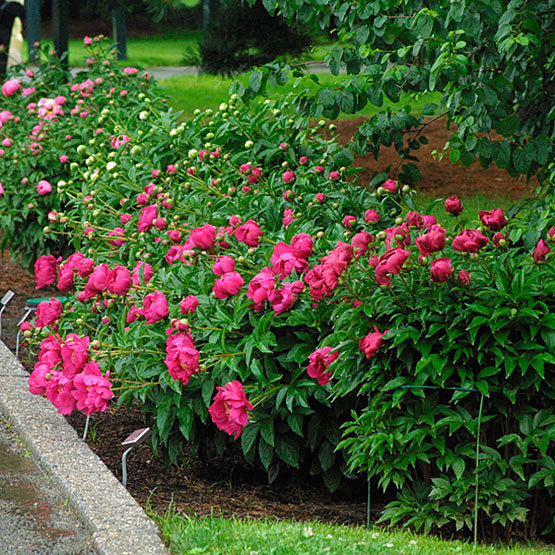
Plants in the genus Paeonia are clump-forming perennials and deciduous shrubs or subshrubs grown for their large, colorful, and sometimes fragrant flowers. Blooms are usually upright and solitary, sometimes several to a stem. Use in mixed, herbaceous, or shrub borders. Herbaceous cultivars bloom in late spring and early summer. Tree peonies bloom in mid-spring and late spring.
Learn more: Peony Extravaganza!
Noteworthy CharacteristicsPeonies have a wide distribution in meadows, scrub, and rocky places of East Asia to Europe, and in western North America. They sometimes have showy, red- or black-seeded podlike fruits. Flowers are saucer-, cup-, or bowl-shaped, vary widely in color and size (from 2 and up to 12 inches across), and can be single, semi-double, double, and Japanese. All parts are toxic.
CareDeep, fertile, humus-rich, moist but well-drained soil. Full sun or partial shade. Large cultivars may need support.
PropagationDivide herbaceous cultivars in early autumn and replant, placing the new growths 2 inches below the surface; take root cuttings in winter. Take semi-ripe cuttings of tree peonies in summer or graft in winter.
ProblemsProne to ringspot virus, verticillium wilt, botrytis blight, tip blight, leaf blotch, stem rot, Japanese beetles, and nematodes.
























